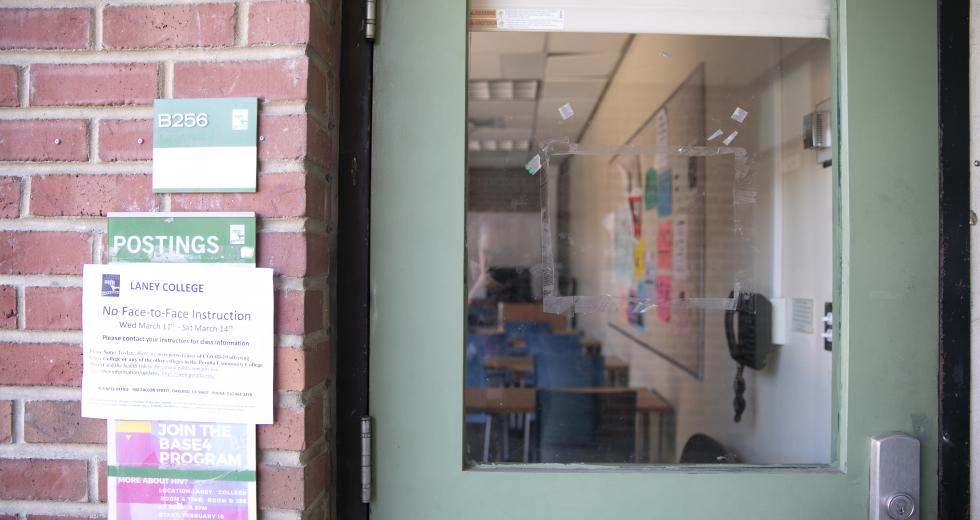As math instructor Alyssa Wong drove to a recent meeting to discuss the College of San Mateo’s transition to online classes — spurred by the coronavirus outbreak — she was full of questions.
“When you close a place like Harvard and send everybody home, they assume if you can afford $50,000 a year, you have a computer,” she said. “That’s different at a community college because we service a lot of people, everyone from high school students to people who are older. Even some of the teachers who are older, they don’t have any internet access at home.”
Wong said she knew of at least two instructors in her department without in-home internet connections. “It’s uncharted territory,” she said.
Online education has been alternately hailed as the wave of the future, a way to deliver relevant curriculum to the masses at a lower cost, and disparaged as an inferior, Mickey Mouse version of “real” study that leaves some of the most vulnerable students behind. Now California is about to embark on an enormous, unplanned experiment in remote learning — and no one knows how long it will last.
With University of California, Cal State, community college and private campuses across the state shifting to online instruction to avoid spreading the virus, professors are getting crash courses in videoconferencing and testing software for virtual labs and exams. Meanwhile, administrators are scrambling to find loaner laptops for low-income students, ease rules requiring in-class time and support students for whom college is a lifeline to necessities like food and health care.
Many colleges have paused classes entirely for several days, moving or extending their spring breaks, to give faculty time to ramp up.
The first challenge is simple: making sure everyone can log on.
Spokespersons for both California State University and the California Community Colleges said they did not have data on how many of their students lacked access to a computer or internet at home. But many of the students come from low-income households, which are less likely to have a broadband connection. Having old or broken hardware, or poor connection speeds, can also prevent students from succeeding in class, a recent study found.
About 79 of the state’s 115 community colleges had submitted plans to transition to online instruction as of Tuesday, and many aimed to keep their computer labs open for students to use, said Marty Alvarado, the system’s Executive Vice President for Services and Support. One college had set up a lending library of 800 laptops, she said.
But other community colleges’ laptop stashes are far smaller, and computer labs themselves could become breeding grounds for germs if large numbers of students are using them. In the Bay Area, Sacramento and Monterey County, students and faculty — like the rest of the population there — are under an order to shelter in place, and more regions could follow.
Alvarado said the chancellor’s office had negotiated with their videoconferencing vendor to provide extra accounts for students and faculty at no additional cost. She described the situation at colleges as “thoughtful and intentional anarchy.” Teams of faculty with more experience teaching online are helping colleagues adjust, she said, urging them to create lessons that could be viewed as easily on a smartphone as on a computer.
Adapting Curriculum
Chris Hill, left, and her daughter TJ help another daughter pack
to move out of her UC Berkeley dorm. The university allowed
students to cancel housing and dining contracts without penalty.
(Photo by Vanessa Arredondo, CalMatters College Journalism
Network)
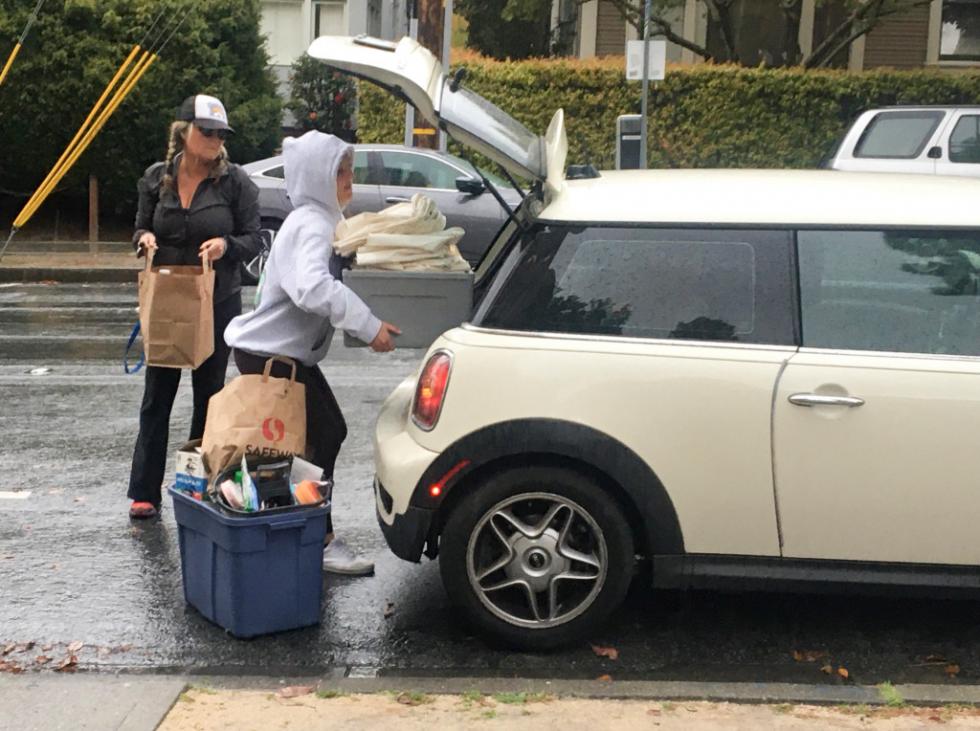
Not everyone is starting from zero. Many professors have experience using online course-management systems like Canvas and Blackboard. Nearly a quarter of Cal State students, and more than 40% of community college students were already enrolled in at least one online class.
At UC Davis, biology professor Jonathan Eisen started talking with his students about the virus after it emerged in China. Two weeks ago, with cases mounting and Eisen scheduled to teach a 980-person lecture class in the spring quarter, he started getting “pretty freaked out.”
“I emailed the other instructors saying, ‘Look, we should get prepared even though UC Davis hasn’t said anything,’ ” Eisen said. “We all went to the higher-ups and said, ‘What do we have to do to start converting the course?’ ”
Eisen says he plans to pre-record his lectures, then use class time to host a live chat on video conference platform Zoom or Reddit, allowing students to pause the lecture and chime in with questions.
“I think the lack of personal connection will affect students, so we want to find a way to provide that—online live chats, virtual office hours, anything like that.”
Science labs are more difficult to convert. Some science instructors are experimenting with the Labster, a platform that allows students to heft virtual beakers and test tubes in a 3D laboratory simulation, then see the results of their experiments in real time.
Cal State has suspended the in-person classroom hour requirement for applicants to its teacher credential program, and is asking the Board of Registered Nursing for permission to have nursing students spend less of their time in hospital rotations and more of it learning virtually.
Greg Niemeyer, an associate professor of media innovation at UC Berkeley, made a video to help colleagues struggling with the transition to digital learning. His top tips: Don’t be nervous. And remember that you may need to play with the format to keep students engaged—a lesson Niemeyer learned when he moved one of his own classes online.
“We’d meet for three hours in person, and that seems to be a fun thing to do because you get to chat and take breaks,” Niemeyer said. “But a three-hour online class is dreadful because people just stare at a screen and sit in a chair for three hours.”
Quiet study space becomes a luxury, Niemeyer said, when students are huddled with family or packed into dorms with roommates who are no longer leaving to attend class. And some lecturers don’t have offices from which to teach their classes.
“I have two places on my floor where I can study, but even then everyone is looking for a space,” said Lesly Avendaño, a junior living in the UC Berkeley dorms. “I’m usually with other people, and you’re both doing Zoom classes, and you’re both speaking, and you’re both trying to listen to your meetings.”
Supporting Students
The shift to online instruction is made more difficult by the disruptions students are dealing with in their daily lives. California’s public universities have largely tried to minimize those disruptions by keeping housing and dining services open for those who need them. Most University of California campuses are offering partial rent refunds to students who choose to leave dorms before the end of the semester, and some CSU campuses are refunding parking permits.
The rent refund offer posed a dilemma for Avendaño, who said her family could use the money. But she was afraid that if she had been exposed to the virus and went home, she might infect them. “I’m not even trying to worry about academics. I’m just worried about my own safety and my family,” she said.
An email sent to Berkeley students Friday said the campus was considering delivering boxed meals to dorm residents and scheduling the use of common rooms to keep students apart.
UC San Diego is arranging mental health counseling via video for students who go home for the spring quarter.
On a number of campuses, however, gathering places like gyms, bookstores, health centers and even libraries are shutting down, causing students to lose their on-campus jobs.
“I’m getting students reaching out to me from all over saying their employers aren’t guaranteeing them pay,” said Ruben Canedo, co-chair of the UC Basic Needs Committee. “Students are paycheck to paycheck, and they’re hourly workers.”
On Monday, UC announced that university employees affected by coronavirus-related closures, including students, can take up to 128 hours of paid administrative leave.
Meanwhile, students with disabilities are saying, ‘Welcome to my world,’ said John Lee, a technology specialist at Cal Poly San Luis Obispo’s disability resource center. “If you want to get insight into how some of these things really work, talk to a disabled person, ‘cause they’ll probably tell you, ‘Oh yeah, I know all about the online world, I live there,’ ” Lee said.
In some ways, the shift to online instruction is a boon for those students, he said. “We don’t have to worry about transportation, we don’t have to worry about getting up and going across a hilly campus, right? We don’t have to worry about sitting up in class because our backs are hurting or staying away.”
But he also said colleges needed to make sure that students with disabilities can access software like voice recognition and text-to-speech programs on their personal laptops, not just on-campus computers.
Some students worried about catching the virus have pushed for colleges to move even more aggressively. At Cal Poly, more than 9,000 students signed a petition asking for finals to be canceled or moved online. On Saturday, university president Jeffrey Armstrong announced that in-person finals would be banned after a San Luis Obispo County resident tested positive for COVID-19.
Savannah Keown, a student at El Camino College, said she was concerned about heading onto the southern California community college campus for a scheduled oceanography lab. “If we keep talking about staying safe and healthy and taking preventative measures, then how come there are exceptions?” Keown wondered.
A New Era for Online Ed?
Laney College has cancelled all classes through April 6 in the
wake of coronavirus concerns, while faculty train to teach
online. (Photo by Anne Wernikoff for CalMatters)
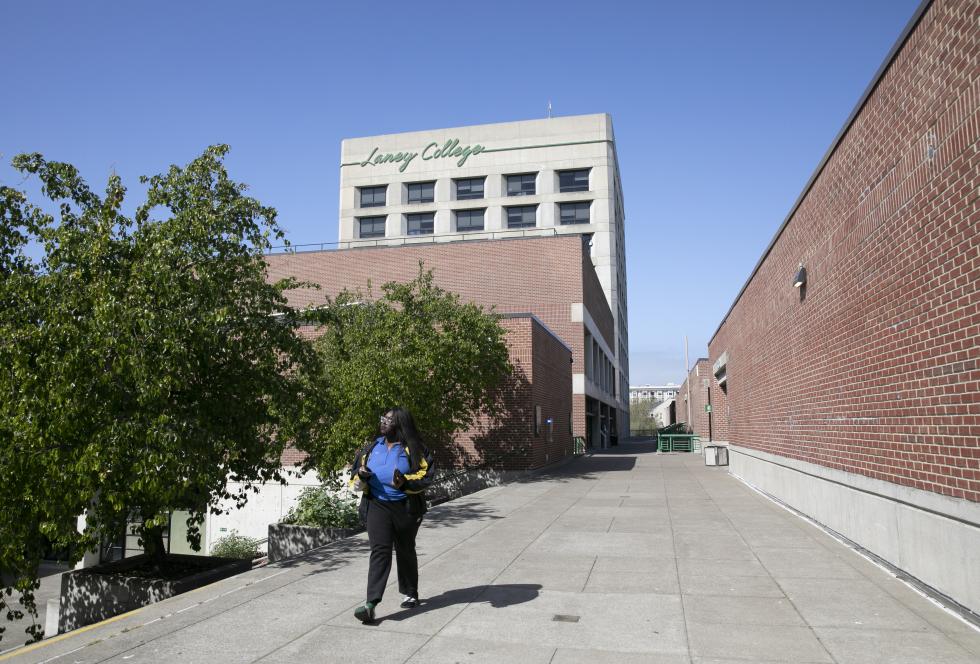
For some faculty members, the crisis has expanded their comfort level with technology. Bill Lepowsky, a math instructor at Laney College for 51 years (and Wong’s stepfather), at first planned to continue teaching in person. His union contract gave him the right to, he said, and only about 20 students regularly attended his statistics class. But then a training session introduced him to Zoom.
“Once I learned a little bit about the technology, it didn’t seem quite so foreign,” Lepowsky said. He weighed the safety of his students, who might have to take public transportation to class, and decided to go online.
But he drew the line at Respondus, a proctoring app for online exams that can spy on students through their computers’ cameras and keep them from opening browsers, so they can’t cheat. That, said Lepowsky, “just seems crazy.”
The rapid shifts colleges are making have fueled speculation that the pandemic will accelerate a shift to online learning.
The crisis “could highlight where online education, when it’s done at a massive scale, might be able to serve some needs in more efficient ways,” said Salman Khan, founder of the nonprofit virtual course platform Khan Academy.
Many faculty, however, are still “deeply suspicious” that large-scale movements to online learning do more to reduce costs and drive profits than to open up access to nontraditional students, said Dylan Rodríguez, chair of the academic senate at UC Riverside.
“Empirical and anecdotal experience shows that students who are the first in their families to get higher education thrive in classrooms and are less likely to thrive in an online setting,” he said. “We want to make sure we’re all on the same page that this is a temporary emergency measure to deal with a pandemic.”
Regardless, it’s clear remote learning is now facing its own final exam in California.
“Online education is a solution waiting for a problem,” said Niemeyer, “and now we have a problem for which online education is a perfect solution.”
–
This story was produced by CalMatters’ College Journalism Network, a collaboration between CalMatters and student journalists across California. Felicia Mello edits the network for CalMatters. Vanessa Arredondo and Janelle Salanga are student contributors. Ethan Coston, Omar Rashad, Adria Watson and Stephanie Zappelli also contributed reporting from their campuses. This story and other higher education coverage are supported by the College Futures Foundation.
CalMatters.org is a nonprofit, nonpartisan media venture explaining California policies and politics. Comstock’s is a CalMatters media partner.
Recommended For You

Local Businesses Struggle as Coronavirus Changes Our Daily Lives
On a bleary Monday morning in Sacramento with the Dow Jones industrial average tanking, on its way to a 2,997 point drop and its worst day since 1987, Greater Sacramento Economic Council President and CEO Barry Broome offered advice for local business owners that he knows won’t be popular.
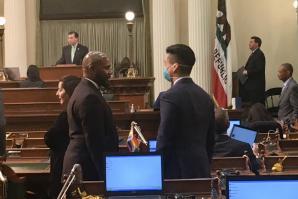
Legislature Passes $1.1 Billion in Emergency Coronavirus Funding — Then Leaves the Capitol
In an urgent attempt to prepare California for a surge of critically ill coronavirus patients, state lawmakers Monday allocated up to $1 billion for an unprecedented ramp-up of hospital capacity, and then, in an extraordinary move, went home for a month — or perhaps longer — effectively shutting down business at the state Capitol as Americans face growing calls to isolate themselves.
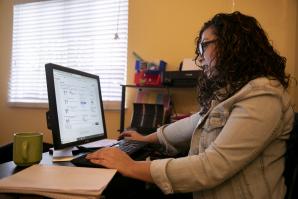
California’s Online Community College Confronts Offline Woes
California’s first-in-the-nation online community college now has 450 students — with no full-time faculty, no CEO and no political champion. What will Calbright’s future be?



